Scientists analyzed iron-rich sedimentary rocks and estimated the amount of oxygen present in the atmosphere when those rocks formed, finding low levels of oxygen and giving insight into a potential biosignature for life beyond Earth. Plus, controlling robots from space, a SpaceX launch, and this week’s What’s Up.
Podcast
Show Notes
Large impacts associated with millennia of quakes
- A Giant Impact Triggered Earthquakes for Thousands of Years (Eos)
- “Evidence from the Vredefort Granophyre Dikes points to crustal relaxation following basin-size impact cratering,” Matthew S. Huber et al., 2021 November 24, Icarus
Robot explores managed by astronauts
- Controlling robots from space (EurekAlert)
- “ANALOG-1 ISS – The first part of an analogue mission to guide ESA’s robotic moon exploration efforts,” Kjetil Wormnes et al., 2022 January 24, Open Astronomy
St. Elmo’s Fire may engulf Mars helicopters
- NASA Goddard press release
- “Will the Mars Helicopter Induce Local Martian Atmospheric Breakdown?,” W. M. Farrell, J. L. McLain, J. R. Marshall, and A. Wang, 2021 March 10, The Planetary Science Journal
Earth’s oxygen rise helps search for life
- McGill press release
- “Strong evidence for a weakly oxygenated ocean-atmosphere system during the Proterozoic,” Changle Wang et al., 2022 February 8, PNAS
SpaceX rocket launches classified satellite
What’s Up: Conjunction of Uranus and the Moon
- Moon and Jupiter on February 2. Farewell, giant planet! (EarthSky)
- Visible planets, stars, moon, more, in February (EarthSky)
- A Handy Guide to Measuring the Sky (timeanddate)
Transcript
Hello and welcome to the Daily Space. I am your host Dr. Pamela Gay.
And I am your host Beth Johnson.
And we’re here to put science in your brain.
On a very non-science note, yesterday, February 2, a groundhog saw its shadow, and we get six more weeks of winter. As a scientist, this whole holiday is the height of silliness. Winter lasts another six weeks. That’s just how it works. And it’s why Pamela is cold in her studio.
But science can be fun, too. And despite me being so very cold, I am brought great joy by looking at robots being operated from space. And helicopters on Mars could glow in the dark, which is awesome.
We also look at how analyzing rocks here on Earth could help us find life on other planets, and then Erik will be here to tell us about the latest of several SpaceX launches this week and share What’s Up in the sky.
So let’s get to all the science, shall we?
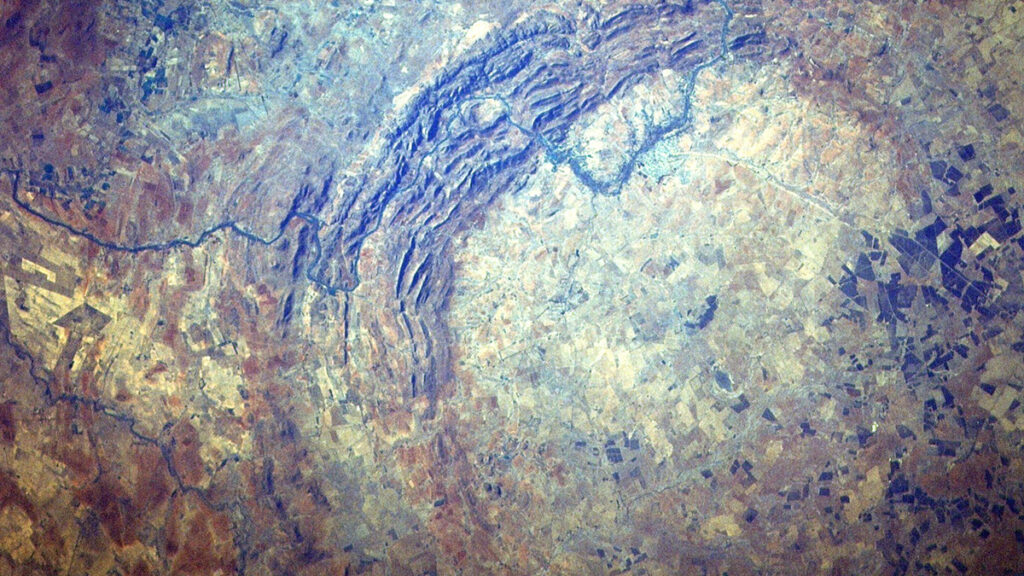
Science is full of stories that sound nice and straightforward only because it is really easy to ignore all the exceptions to the rule. Consider earthquakes. As the story goes, earthquakes come from the motions of the crustal plates that carry around the Earth’s landmasses. Where two plates get stuck on each other, either where they plunge over and under each other or pass side by side, earthquakes can occur in the bad moment when those stuck plates get unstuck.
This means, so the story goes, that when we see quakes on the Moon and Mars, we are seeing indications of a geologically active world and possibly plate tectonics.
…unless the quakes are actually related to volcanism…
…or unless the quakes are caused by impacting asteroids shaking the world…
…or, now we learn, quakes can be from land rebounding from past asteroid attacks.
In new research looking at the Vredefort impact structure in South Africa, researchers have found evidence that the land around the structure continued to be shaped by the impact in new ways for millennia.
Formed 2.02 billion years ago when a 10-15 kilometer across rock hit Earth, this structure has been eroding under the forces of weather ever since. This gives us a unique opportunity to see the subsurface structures in a crater, including impact melt dikes — places where melted rock made inroads into the surrounding material.
In a new paper to appear in Icarus, researchers led by Matthew Huber look at compositions of these dikes and the structure of other features and find they describe a prolonged period of unrest associated with the impact. The impact would have initially compressed the region it hit, and according to the paper: Deep fractures formed in the crater floor as the crust recovered from the impact. Melt dikes formed in multiple stages over an extended period of time. Crustal relaxation at the Vredefort crater lasted ca. 1,000,000 years.
Crustal relaxation means that after getting compressed, the land rebounded back to a less compact state, and as it did, things shook, melted rock flowed in bursts, and, to quote Huber: Even tens of thousands of years after an impact, you would not want to be building a house on the periphery of a crater.
While the paper confines itself to discussing the one terrestrial crater, this is a reminder that as we look to Mars, we need to remember that rebounding land can trigger quakes, and Mars has a lot of rebounding lands.
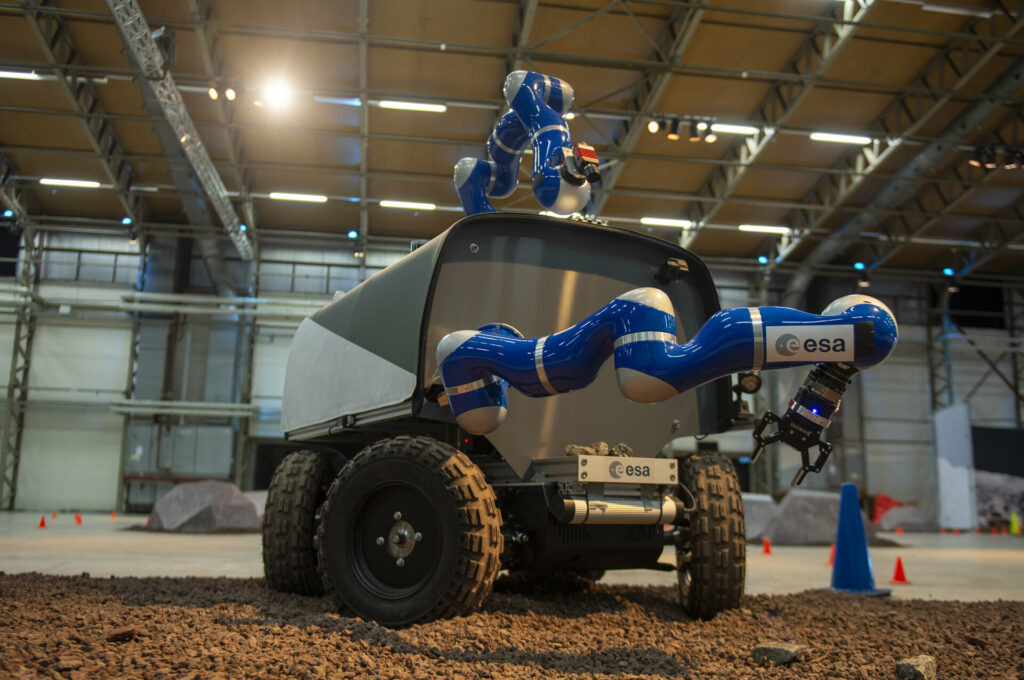
With the Vredefort impact structure, researchers can readily hike out to the structures they want to explore and poke them with scientific instruments. Making similar measurements on other worlds is possible, but it is becoming more and more apparent that the scientific poking around is going to be done by robots, not people.
An article in the journal Open Astronomy discussed an experiment involving a rover driving around a hangar in the Netherlands. That sounds pretty boring, but the place from where the rover was being controlled was far away on the International Space Station (ISS), driven by ESA astronaut Luca Parmitano. The experiment, ANALOG-1, was part of the METRON series of experiments.
Almost all of the interplanetary missions to date have been done by robots, with the exception of the Apollo missions. Robots can go places humans can’t go, but there’s no substitute for a human geologist actually hammering some schist on the Moon or Mars instead of the timid drilling of a robot, but that’s not possible, yet.
The next best thing is having a human control a robot on another planet, possibly from orbit around that planet. That will be much safer than going there in person, and it will still allow better science to be done. However, there are some problems with this method — mainly how to provide feedback to the operator, which is basically the objective of ANALOG-1.
Astronaut Parmitano successfully operated a rover from the ISS, driving the rover over a simulated lunar surface. In addition to driving the rover, he moved the arm on the robot up, down, left, and right and was able to “feel” the arm bumping into things as he moved it. Further, he could tell how much things weighed through a feedback mechanism. According to one of the paper’s authors, Kjetil Wormnes: It is possible that this could, one day, even pave the way to establishing and sustaining a human presence on the Moon.
And on Mars, at least, it looks like some of those remotely controlled devices just might glow.
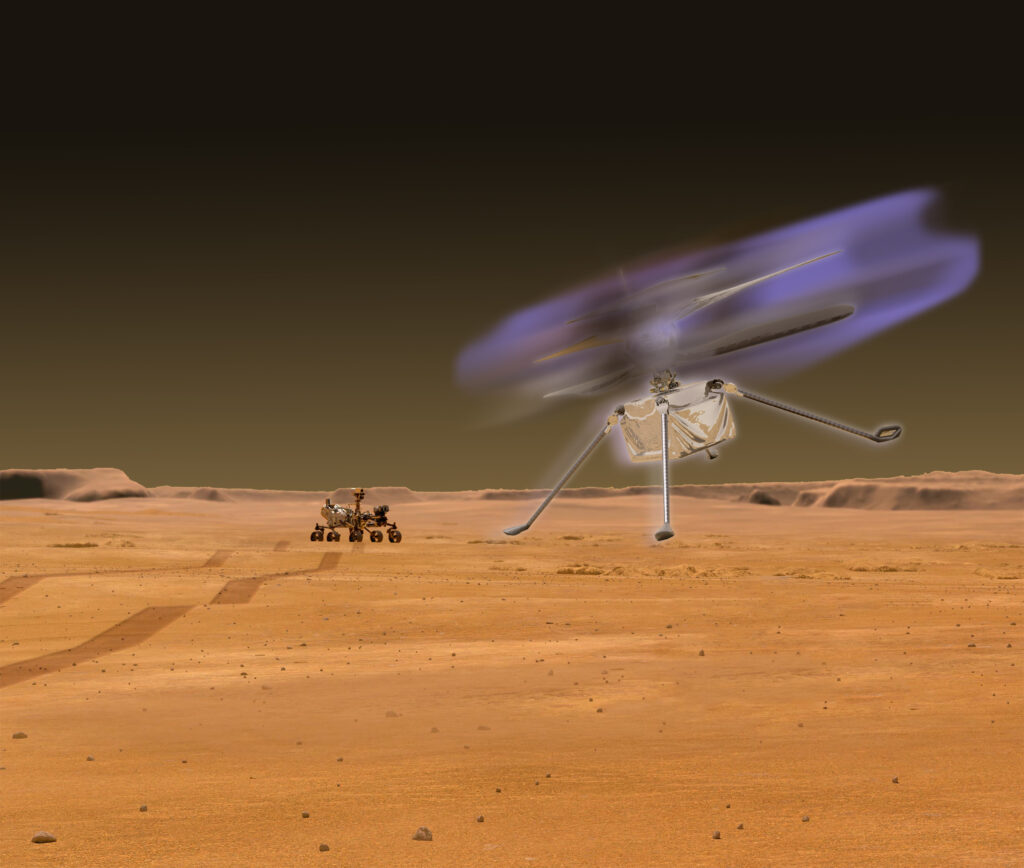
Mars is a dusty place, and new simulations find that tiny helicopters flying in the Martian atmosphere may build up a charge on their propellers and casing. And according to research lead William Ferrell: The faint glow would be most visible during evening hours when the background sky is darker. NASA’s experimental Ingenuity helicopter does not fly during this time, but future drones could be cleared for evening flight and look for this glow.
The physics behind this is very similar to the phenomena of rubbing a balloon on your hair or on a pet and then using the balloon to either get your hair to stand on end or stick the balloon to a wall. Friction between two very different kinds of surfaces can allow electrons to jump from one object to another.
And this brings us to my favorite word in physics: that difference between surfaces is referred to as their triboelectric value. Cats have a large positive value, and balloons are more on the negative side of the series. Similar can be said of helicopter blades versus Martian dust.
Here on Earth, when ships at sea enter storms, a charge can build up on masts. Same with airplanes in storms. We also see friction when the ash in volcanic plumes builds up a charge. In all instances, this glow, referred to as St. Elmo’s Fire, often precedes lightning. On Mars, that isn’t a concern, so I for one look forward to a future of tiny glowing helicopters flitting through the Martian twilight.
But that is likely far in the future. For now, let’s take a look at Earth’s deep past, the history of oxygen, and the life that made it and allowed life like us.
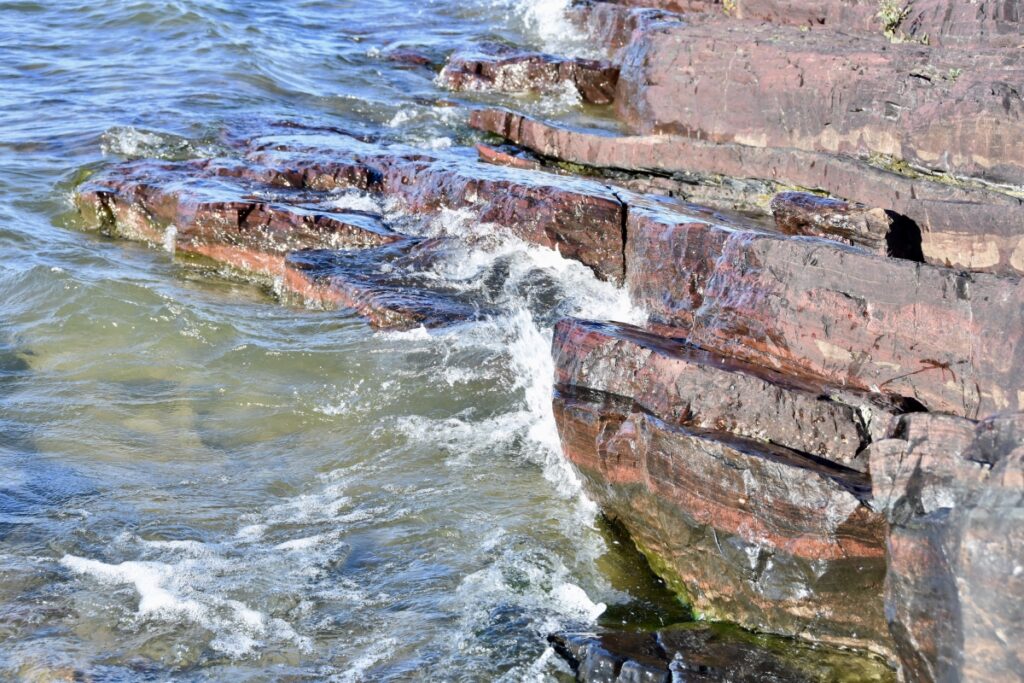
A lot of times in science, to understand where you are and what will be, you have to look back at where you came from. In the search for life beyond Earth, with our sample size of just one, we are compelled to understand everything we can about how life came about here on our pale blue dot. That way we have some idea of what to look for on other worlds.
It’s not a simple process. Earth, so far, has proven to be unique, and we’re not 100% certain just what ingredients were needed to allow life to not only develop but flourish. There are thousands upon thousands of known exoplanets out there, but we haven’t found that perfect Earth 2.0 that will give us a possible sample size of, well, two.
So we look back into Earth’s past to try and understand how life arose and maybe find a clue for something we can find elsewhere that will tell us, “Yes, that planet has life.”
In new research published in the Proceedings of the National Academy of Sciences, scientists analyzed the oxygen content of iron-rich sedimentary rocks from around the world, trying to understand what Earth was like in the distant past and what changes came about that we can maybe measure in an atmosphere elsewhere. Co-author Maxwell Lechte explains: Until now, there was a critical gap in our understanding of environmental drivers in early evolution. The early Earth was marked by low levels of oxygen, till surface oxygen levels rose to be sufficient for animal life. But projections for when this rise occurred varied by over a billion years—possibly even well before animals had evolved.
And that’s where the rocks come in. These iron-rich sedimentary rocks, or ironstones, provided the researchers with a way to determine the amount of oxygen present when the rocks formed. The results were intriguing, as lead author Changle Wang goes on to explain: These ironstones offer insights into the oxygen levels of shallow marine environments, where life was evolving. The ancient ironstone record indicates around less than 1% of modern oxygen levels, which would have had an immense impact on ecological complexity.
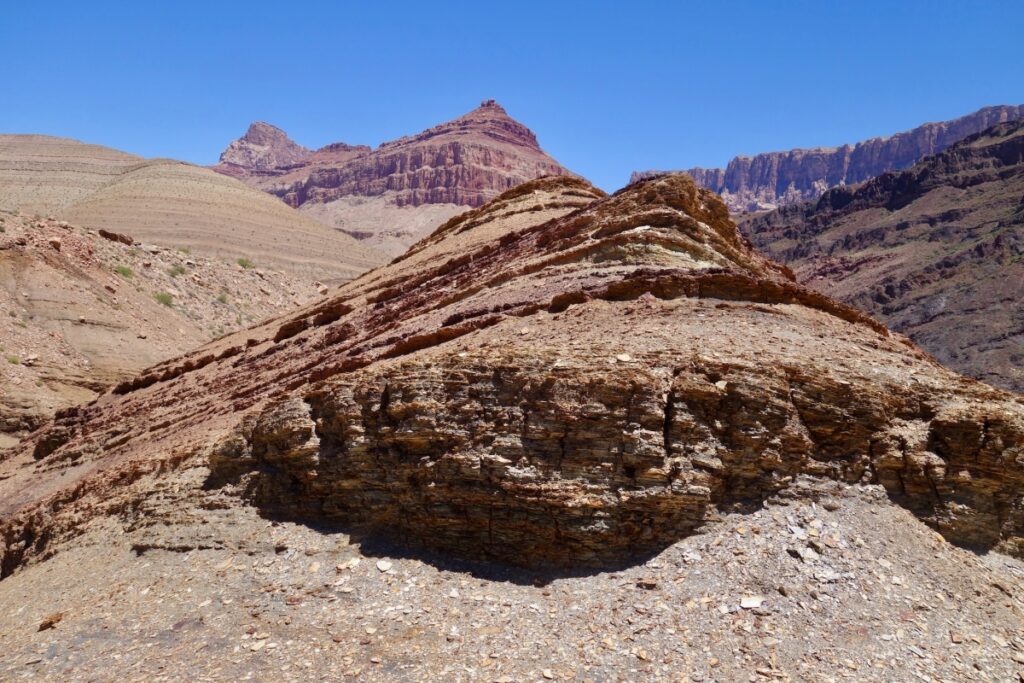
And Lechte continues: These low oxygen conditions persisted until about 800 million years ago, right when we first start to see evidence of the rise of complex ecosystems in the rock record. So if complex eukaryotes were around before then, their habitats would have been restricted by low oxygen.
So how did Earth’s oxygen levels increase dramatically enough to harbor larger and larger lifeforms? That rise is called the Great Oxidation Event, and it is thought to have been caused by cyanobacteria producing oxygen through photosynthesis. Of course, oxygen is toxic to life, so that same rise of oxygen probably caused a mass extinction event. No, really. Oxygen is toxic. That’s why we need antioxidants. It’s slowly killing us.
Biology is bizarre. I much prefer rocks.
Now all of this leads us to the search for life beyond Earth because oxygen can be detected in an atmosphere from space. Our sample size of one may just be enough, if we understand it, to point to ozone as a biosignature in another atmosphere. Another co-author, Noah Planavsky, notes: Ozone strongly absorbs ultraviolet light, making ozone detection possible even at low atmospheric oxygen levels. This work stresses that ultraviolet detection in space-based telescopes will significantly increase our chances of finding likely signs of life on planets outside our solar system.
And that’s where that new, shiny, golden telescope comes into play. One of its goals is to look at exoplanetary atmospheres, which we can then analyze and use to hunt for possible biosignatures, like ozone. I, for one, am looking forward to all that research.
Of course, to get to using space telescopes, we have to launch space telescopes. And not all of them are for science. Coming up next, Erik Madaus covers the latest SpaceX launch and then tells us What’s Up.
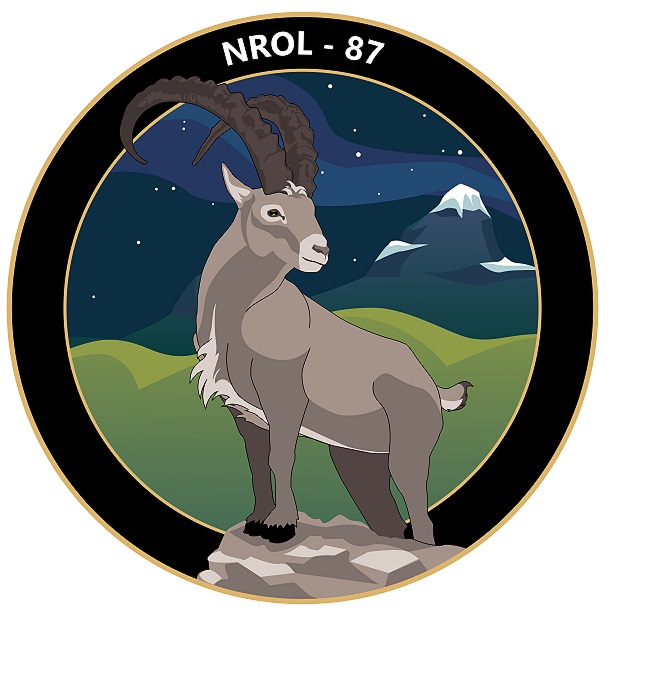
On February 2 at 20:27 UTC, a SpaceX Falcon 9 launched the NROL-87 mission into orbit from SLC-4E at Vandenberg Space Force Base in California.
As is typical for NRO launches, no details about the payload were disclosed, and after first stage separation, the webcast switched to exclusively following the first stage as it completed its boost back, reentry, and landing burns to do a Return To Launch Site landing just under 400 meters from the launch pad it had departed eight minutes earlier. The lack of second-stage coverage permitted the first stage’s entire trip to be shown, to space and back, uninterrupted and without the usual cutout at touchdown since the pad was on land. After the stage was safely landed, the SpaceX commentator signed off and the webcast ended.
We can’t cover an NRO launch without talking about the patch for the mission, as they’re always unique and sometimes slightly terrifying. NROL-87’s patch features a mountain goat on a peak with mountains and a starfield in the background. The NRO described the mountain goat’s symbolism as “standing proud atop a mountain peak remaining watchfully alert.”
What’s Up
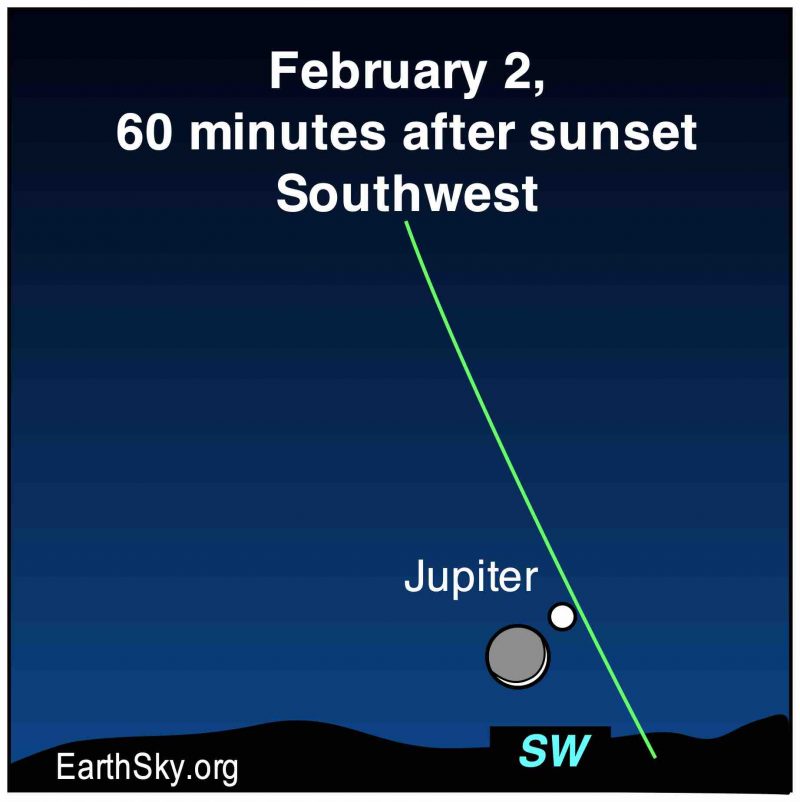
From one event shrouded in mystery and symbolism to one that’s just a coincidence of sightlines, this week in What’s Up is a conjunction of the Moon and Uranus. This event is not particularly special; it’s a cosmic coincidence of two objects happening to appear near each other from the perspective of someone standing on Earth. In reality, the two objects are billions of kilometers away from each other.
Uranus will be within two degrees of the Moon, which is a bit less than the width of two fingers held out at arm’s length this coming Monday, February 7, [Ed. note: Corrected from the show] in the early evening. You will be aided by the Moon’s relative dimness, being in its waxing crescent phase.
Unless you have a really large telescope, you will only be able to see Uranus as a dot, not a fully resolved disk, but it’s still interesting as a bluish/green dot and bright enough, at between magnitude 5 and 6, for even small telescopes to see. In a telescope at moderate power, you should be able to fit part of the Moon and Uranus in the same field of view to see details on both simultaneously! While you’re in the region, you can explore the Moon’s craters and other features at high power.
Another close conjunction that recently happened was that of the Moon and Jupiter. Jupiter was within four degrees of the Moon, a bit less than three fingers at arm’s length, this past Wednesday, February 2, in the early evening. Jupiter is technically still up, but it’s very low in the sky and sets shortly after sunset. Jupiter will be better positioned later this summer, during its opposition.
This has been the Daily Space.
You can find more information on all our stories, including images, at DailySpace.org. As always, we’re here thanks to the donations of people like you. If you like our content, please consider joining our Patreon at Patreon.com/CosmoQuestX.
Credits
Written by Pamela Gay, Beth Johnson, and Erik Madaus
Hosted by Pamela Gay, Beth Johnson, and Erik Madaus
Audio and Video Editing by Ally Pelphrey
Content Editing by Beth Johnson
Intro and Outro music by Kevin MacLeod, https://incompetech.com/music/


 We record most shows live, on Twitch. Follow us today to get alerts when we go live.
We record most shows live, on Twitch. Follow us today to get alerts when we go live.